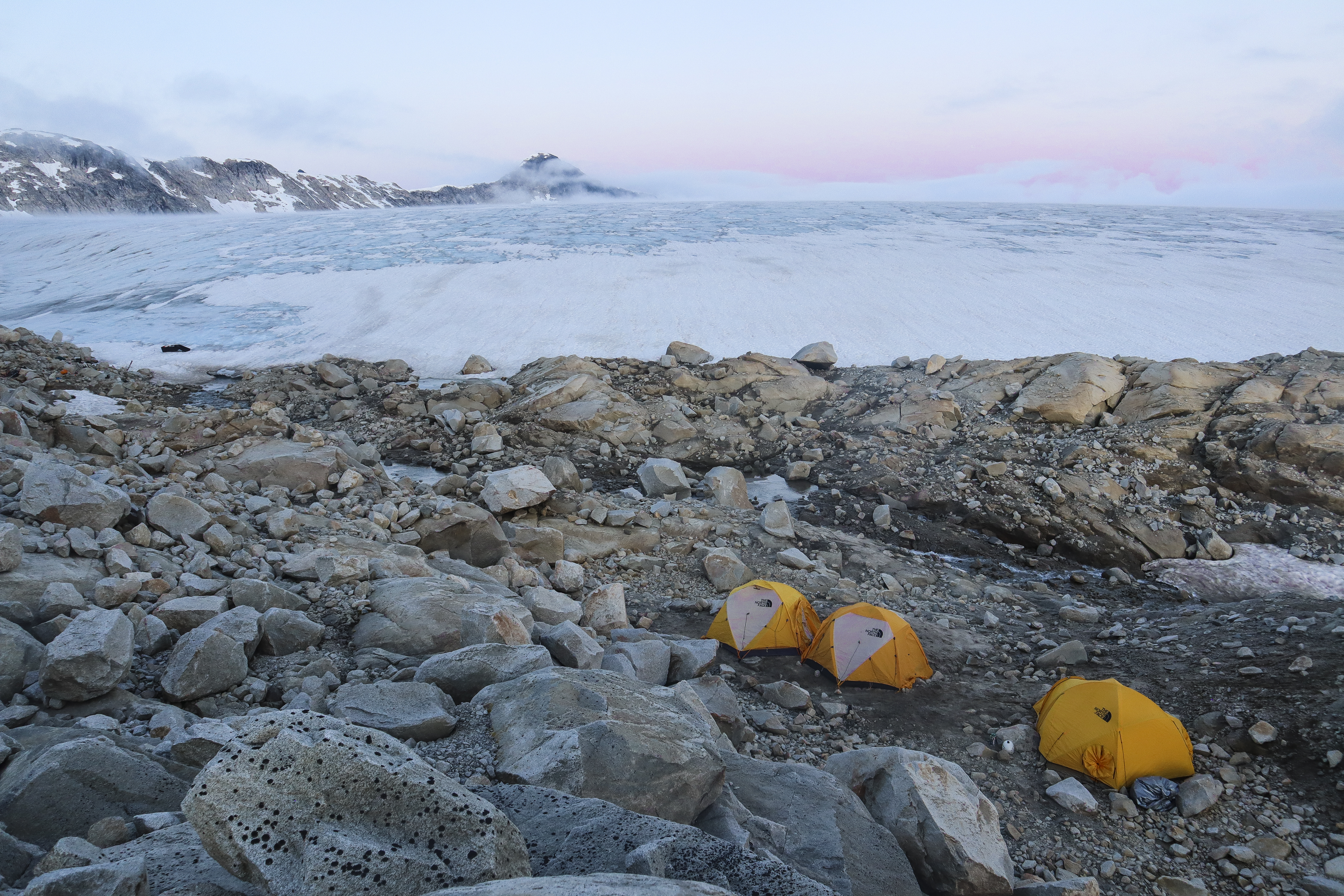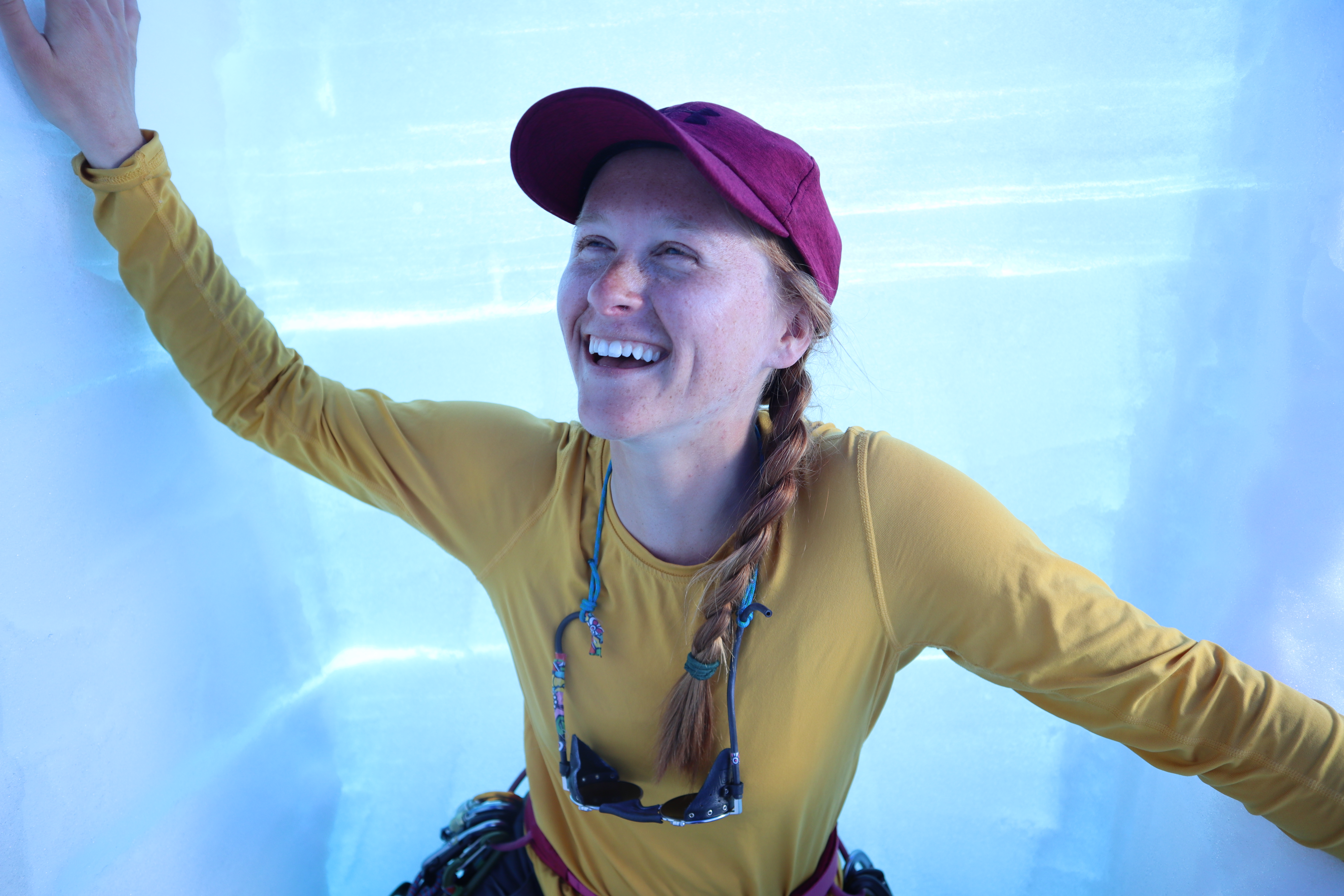
Kennedy participated in the Juneau Icefield Research Program (JIRP), an expeditionary researcher experience. The two-month program entailed scientific research, mountaineering and multi-disciplinary explorations--all while traversing from Juneau, Alaska, to Atlin, British Columbia, Canada, via cross-country skiing.
Kennedy received extensive mountaineering safety training during the six-week trek across the icefield, including crevasse rescue, wilderness first aid and how to navigate safely on glacial terrain. Equipped with these new skills, Kennedy and other in the group participated in recreational activities such as repelling into crevasses, ice climbing, exploring ice caves, summiting mountains and skiing back down.
As part of the program's research component, Kennedy helped record changes in the glaciers to measure effects of climate change on Alaska. She was also part of the research group focused on ecological changes at sites across the icefield that were deglaciated, which means the rock underneath the ice has been exposed for a while because the glacier is melting and moving.
"We were looking at how plant communities change over time with distance from the glacier," she said. "For example, generally the further away an area is from the glacier's end, the longer it's been deglaciated and the longer it's had to develop the soil and plant communities."

Another aspect of the program included creating artworks to explore how scientists can communicate science through other medium. Kennedy created abstract cyanotypes, a printing process used to make blueprints, with snow and plant materials. She also used watercolors and drawings to document her field work.
"Through the JIRP program I've developed a huge interest in communicating climate science and using storytelling for science communication," Kennedy said. She plans to continue exploring ways to communicate scientific findings on human's impact on the environment.
At the end of the excursion, the group arrived in Atlin, British Columbia. Kennedy presented her findings to residents of the small Canadian community, an annual tradition for the long-standing research program.
Immersive coursework at IUPUI prepared Kennedy for the JIRP expedition. Her earth sciences coursework included many field trips to various environments to record data and prepare observational reports. She also spent five semesters working in research labs with Department of Earth Sciences researchers Broxton Bird and Kathy Licht.

"If I could offer one piece of advice to an undergraduate, it would be to definitely get in the lab and work for at least two semesters," Kennedy said. "My involvements in the labs and doing undergraduate research definitely helped prepare me for this experience."
Kennedy has made getting out into the field a priority since she was a high school student. As a teenager, she twice participated in the Yellowstone National Park Youth Conservation Corps Program, a residential program for teens ages 15-18 years old. That program allowed her to participate in conservation projects and resource education efforts.
"As a kid growing up in Indiana and not traveling very much, that was a huge eye opener for me," Kennedy said. "Seeing the landscapes and connecting with the land out there, I developed a huge value, want and need to preserve that land."
During her summer breaks from IUPUI, Kennedy returned to Yellowstone as a backcountry ranger intern and a biological science technician.
Now Kennedy is planning her next move as she prepares for graduate school--and certainly her next adventure.
Written by: Candace Beaty Gwaltney